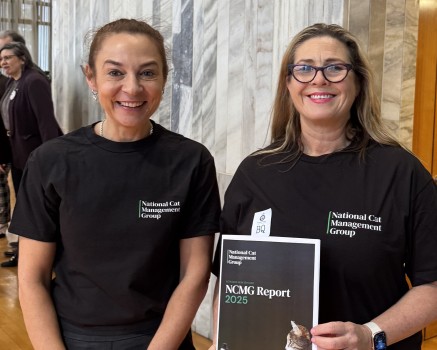Different approaches needed for domestic and feral cats, says Vet Association
MEDIA RELEASE
Published on 26 June 2025.

Dr Sally Cory and Dr Natalie Lloyd at the official launch of the National Cat Management Group Report.
Better management of both domestic and feral cats must reflect the differing needs and circumstances of each category, says the New Zealand Veterinary Association Te Pae Kīrehe (NZVA).
NZVA, as a member of the National Cat Management Group, supports the recommendations in the National Cat Management Group Report released today, which sets out a humane, coordinated, and nationally consistent path forward for managing cats in Aotearoa New Zealand.
“Veterinarians understand the importance of domestic cats as beloved companions for many New Zealanders,” says Dr Sally Cory, NZVA Head of Veterinary Services, Companion Animals.
“It’s vital that everyone understands the difference between these cherished companions and feral cats who do not have any interaction with people, because each needs different management approaches.”
“Feral cats are those living completely wild, away from centres of human habitation, and are self-sustaining, with none of their needs provided by humans.
“Domestic cats depend on humans for their welfare. Domestic cats include companion cats - those living with us in our households - and stray cats . Stray cats live around centres of human habitation, and may be lost, abandoned, or born stray, but still get some of their needs, such as shelter and food, met indirectly by people.
All cats are sentient beings, a fact recognised under the Animal Welfare Act 1999. NZVA strongly supports a national framework that reflects this, ensuring all policies are grounded in animal welfare science and ethics, minimising harm, promoting responsible ownership, and safeguarding New Zealand’s biodiversity.
“For domestic cats, our focus is on responsible cat ownership. We support the recommendation that microchipping and de-sexing should be mandatory, and cat breeding should be regulated.
“For strays, we support reducing the population of unowned cats, through desexing by care providers or through managed targeted trap-neuter-return programmes where appropriate.
“NZVA also recognises that feral cats, while sentient, pose a serious threat to native wildlife and are implicated in the spread of diseases such as toxoplasmosis. On balance, NZVA supports feral cats being managed as pests and their populations humanely reduced or eradicated as part of Predator Free 2050, provided this is done in accordance with best-practice animal welfare standards.
“Cats move fluidly between owned, stray, and feral populations, so a coordinated, multifaceted approach is essential—cat management is complex, but with compassion, science, and collaboration, we can do better for cats, for people, and for our environment,” says Dr Cory.
ENDS
For further information contact media@vets.org.nz
